Mazda 6 Service Manual: Control valve body installation
On-Vehicle Installation
Caution
- Be sure to align the parking rod and the manual valve.
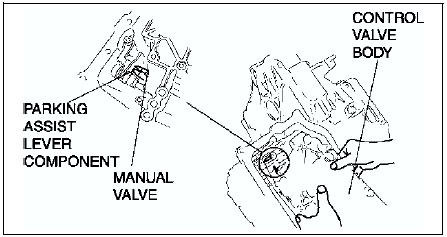
1. Install the accumulator springs and accumulators into the transaxle case.
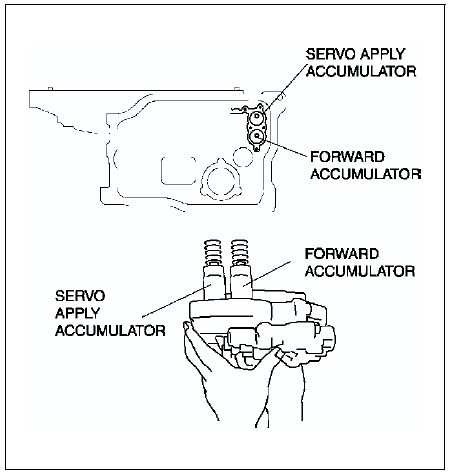
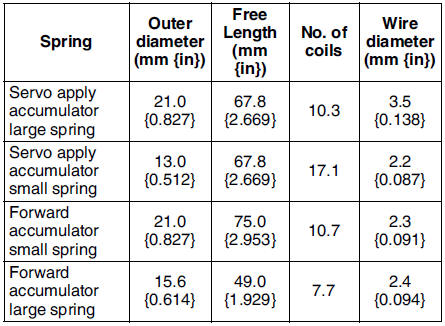
2. Install the control valve body component.
Tightening torque 7.8-10.8 N·m
{80-110 kgf·cm, 70-95 in·lbf}Bolt length (measured from below the head) B: 40 mm {1.575 in}
No mark: 70 mm {2.756 in}
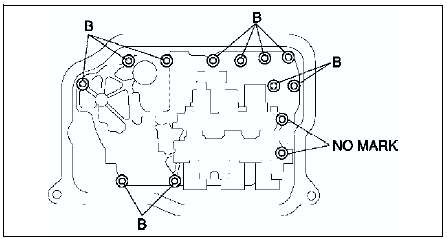
3. Install the oil strainer.
4. Match the harness colors, then connect the solenoid connector and TFT
sensor connector.
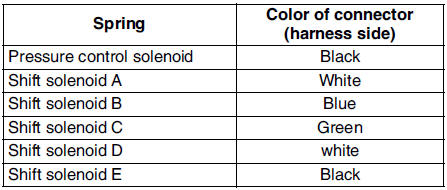
5. Install the ground.
Tightening torque 7.8-10.8 N·m {80-110 kgf·cm, 70-95 in·lbf}
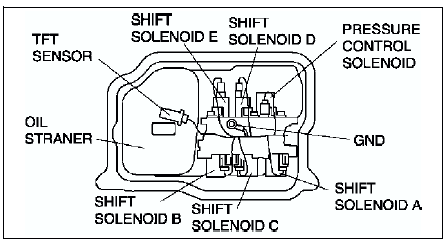
6. Apply a light coat of silicon sealant to the contact surfaces of the oil pan and transaxle case.
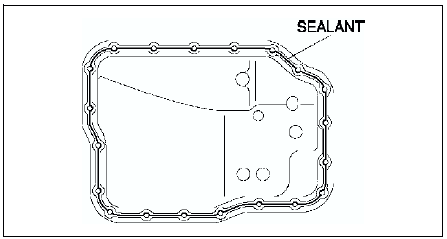
7. Install the oil pan.
Tightening torque 6-8 N·m {62-81 kgf·cm, 53-70 in·lbf}
8. Install the crossmember. (See FRONT CROSSMEMBER REMOVAL/INSTALLATION.)
9. Install the front tires and splash shield.
10. Install the under cover.
11. Connect the negative battery cable.
12. Add ATF and with the engine idling, inspect the ATF level. (See AUTOMATIC TRANSAXLE FLUID (ATF) REPLACEMENT.)
13. Carry out the mechanical system test. (See MECHANICAL SYSTEM TEST.)
14. Carry out the road test. (See ROAD TEST.)
 Control valve body removal
Control valve body removal
On-Vehicle Removal
Warning
Using compressed air can cause dirt and other particles to fly
out, causing injury to the eyes. Wear protective eyes whenever using
compressed air.
Caution
...
 Oil cooler flushing
Oil cooler flushing
Note
The contaminated cooler line (oil pipes and hoses) and auxiliary
cooler must be flushed completely when ATX is overhauled or replaced.
1. Remove the two oil cooler line hoses and apply ...
Other materials:
Mazda 6 Service Manual: Split Folding
By lowering the rear seatbacks the luggage compartment space can be expanded.
WARNING
Do not drive the vehicle with occupants on folded down seatbacks or in
the luggage compartment. Putting occupants in the luggage compartment
is dangerous because seat belts cannot be fastened which coul ...
Mazda 6 Service Manual: Special tools
ENGINE
Ford SST numbers are collated with Mazda SST numbers in the example below.
Ford SSTs are marked with Ford SST number.
Example
1: Mazda SST number
2: Ford SST number
LUBRICATION SYSTEM
COOLING SYSTEM
FUEL AND EMISSION CONTROL SYSTEMS
CLUTCH
MANUAL TRANSAXLE
AUTOMATIC T ...
